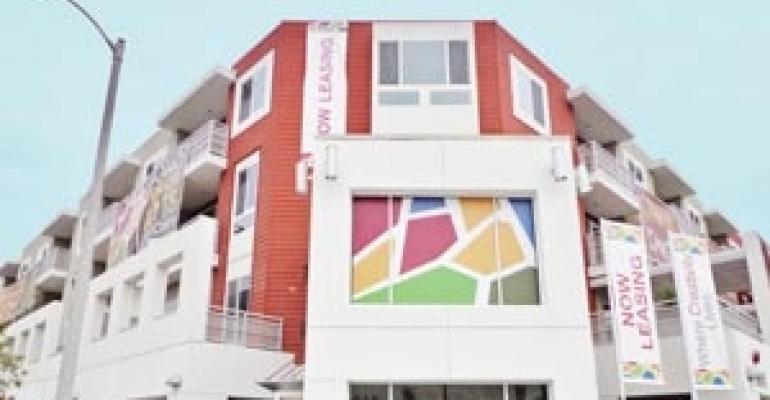The days when bingo was the most fulfilling activity at a seniors housing facility are over.
As the industry prepares for the expected explosion of demand in a decade or so, another area where the baby boomers define themselves will be in what they want offered at seniors housing in terms of activities and entertainment. Some believe the World War II generation was more amenable to relax in retirement, while it’s also possible that shuffleboard and bingo were the best ideas available to 1970s-era developers. Most properties today still don’t offer more “to do” items than the average city-run senior center.
A few new properties across the country are examples of the new thinking, however, that keeping both the mind and body active and engaged allows retired seniors to live a healthier and happier life. One of the leaders in this thinking is Tim Carpenter, president of the EngAGE, a nonprofit that provides programming such as arts camps, filmmaking and music instruction to a number of Southern California seniors facilities.
“I think seniors today, and those getting close to retirement age, are different—they’re loud and brash and will look at retirement housing much differently than a generation before did,” Carpenter says. “Before retirement facilities were designed to carry you just a few years after age 65, but today seniors are living two-to-three decades past that, that’s a whole separate lifetime. When you talk about activities and entertainment today, seniors want some level of understanding that this phase of life has importance, meaning, value and purpose.”
Carpenter says the model EngAGE follows is a college approach: He hires university-level teachers and runs semester-based programs to keep the attention of residents. “You have to have a goal in mind,” he says. “At the end of every semester we have culminating events, such as if it’s a writing class they’ll read a poem on stage, or [if it’s] a film class they’ll show their work.”
One of the companies to embrace Carpenter’s ideas has been Meta Housing Corp., which developed and owns a few dozen senior housing facilities, including three designed specifically for seniors interested in exploring the arts: the Long Beach/Anaheim Arts Colony in Long Beach, Calif., and the Burbank Senior Artists Colony in Burbank, Calif., as well as the new 126-unit NoHo Senior Arts Colony in the North Hollywood district of Los Angeles, which just started lease-up in January.

The three communities are designed to provide arts training for residents, and each feature a stage and theater that’s either run by the community or by a local troupe that allows the seniors to use the facility. Kasey Burke, executive vice president at Meta, says he’s starting to see a small shift in developer attitudes about what kind of programs a facility can host. “Seniors today just aren’t the same as 30 years ago, they’re working longer, and want to keep active, they don’t want to be bored or isolated,” he says. “If you keep your mind and body alert with creativity, you live a longer, healthier life, and that’s our goal.”
These active lifestyle properties are also sought out by investors and the community, he says. The Los Angeles Community Redevelopment Agency were captivated by the success of the Burbank property and pushed for the NoHo project, not a light feat, as the NoHo facility is 20-percent affordable, a stigma usually shunned by a municipality.
“The city was excited for us to put NoHo together,” Burke says. “Investors, even those who just focus on dollars and sense, see that while it may cost extra to put the arts components in, we’re also able to capture higher-than-market rents on the back-end.”
Another new concept is the pairing of seniors housing with child care facilities. No, the seniors aren’t the caregivers, but instead share in certain activities throughout the day, such as meals, music and crafts. The 65,000-sq.-ft. TowerLight Childcare just opened at the TowerLight on Wooddale Senior Living center in St. Louis. The seniors and children from babies to 6 years old share a large outdoor playground, arts and crafts rooms and activity rooms.
The program at TowerLight is run by Ebenezer Management Services, which has experience from the Ebenezer Intergenerational Day Program it hosts at Ebenezer Ridges, a combined seniors housing facility and child care property in Burnsville, Minn. There, the youngsters call their building mates “grandmas” and “grandpas” and share a computer, center, activity rooms and even a reading center with an easy chair and a fireplace.
“It’s like at a regular seniors facility, not everyone wants to play bingo, and not everyone wants to participate for every activity, but they are usually there engaged together,” says Erin Hilligan, campus administrator at Ebenezer Ridges. “We discover that some activities, like karate classes, just don’t go together, as the two groups are going in two different directions. But others work great, like sitting out on the gardening patio and blowing bubbles and having a good time together—and where else will you see a group of seniors out blowing bubbles and laughing?”
Carpenter says it’s hard to quantify the retention and success of modern interactive programs, but he argues that the alternative, which can include the lows of resident dementia and depression, should encourage owners and developers to investigate and invest in the new methods for future projects.
“The great thing about these facilities is that if you’re a resident signing into a facility like NoHo or Burbank, you know things are going to be different,” he says. “You know your life is going to change.”

